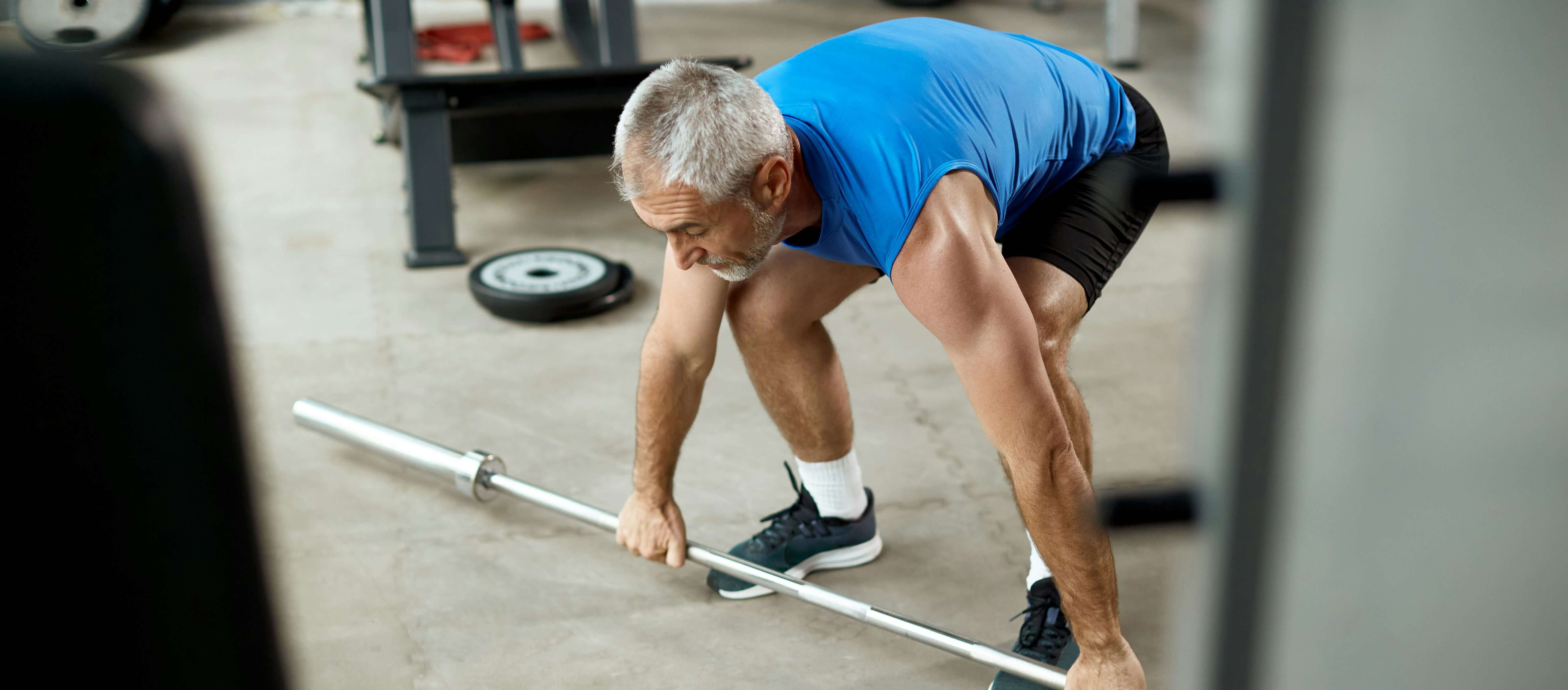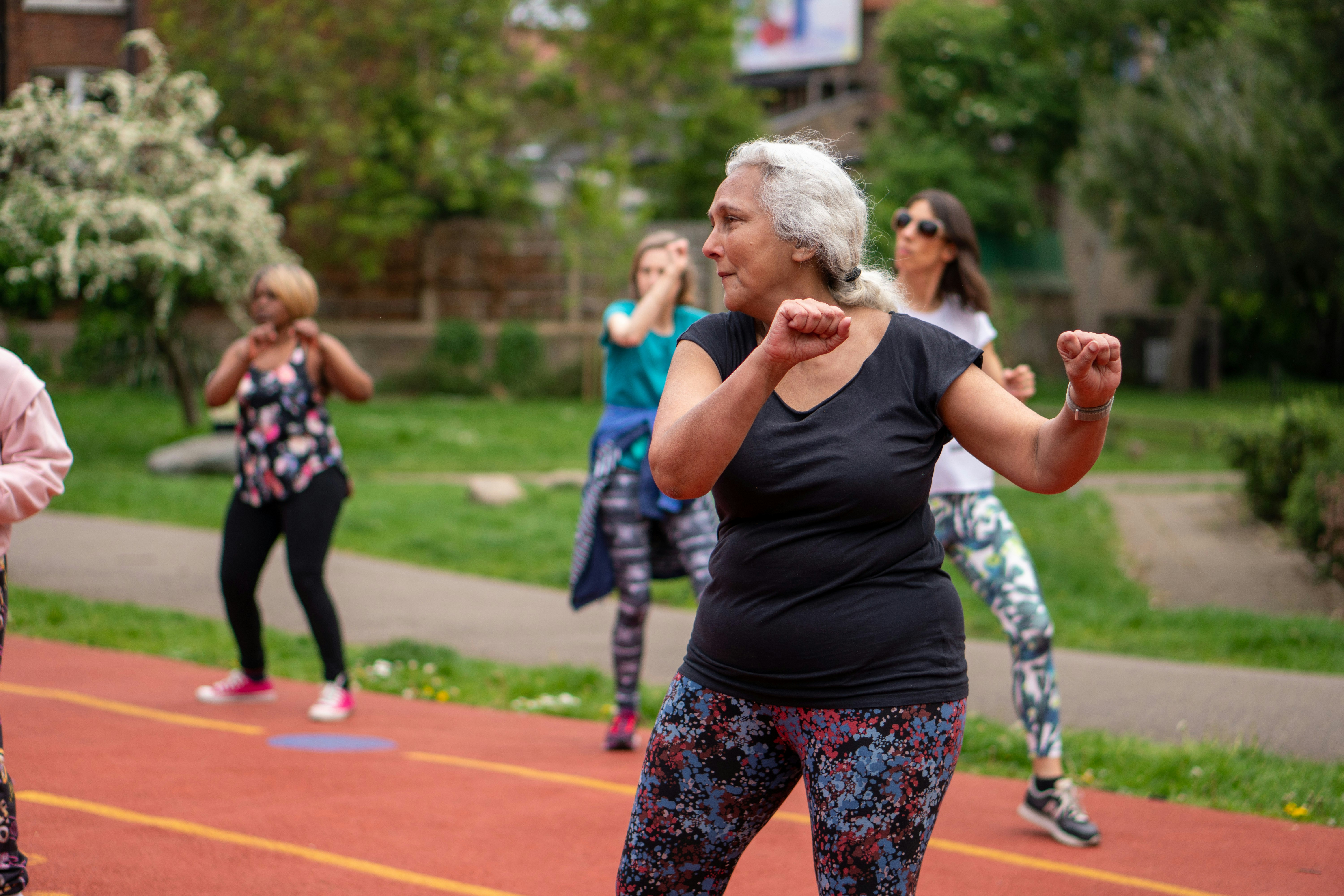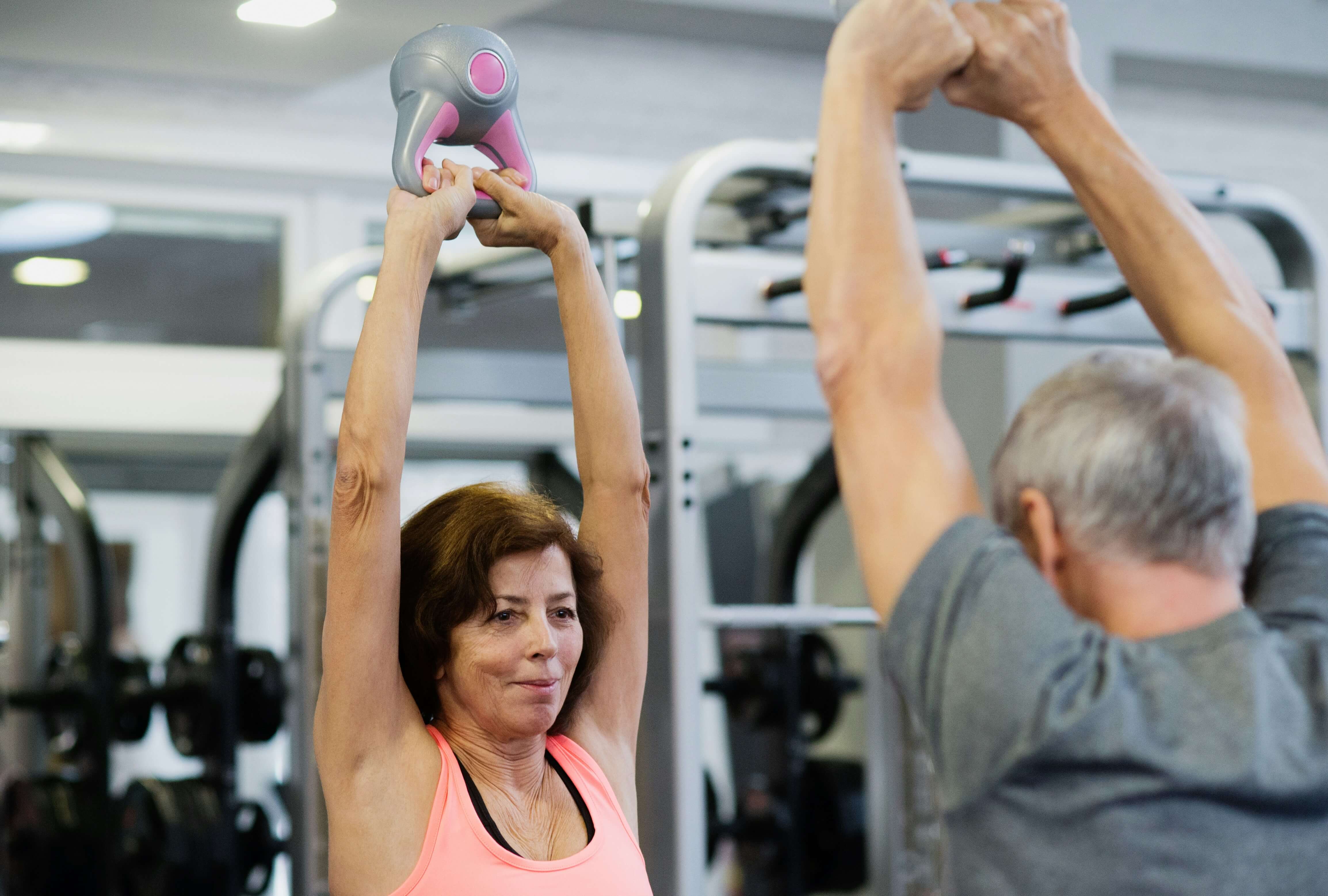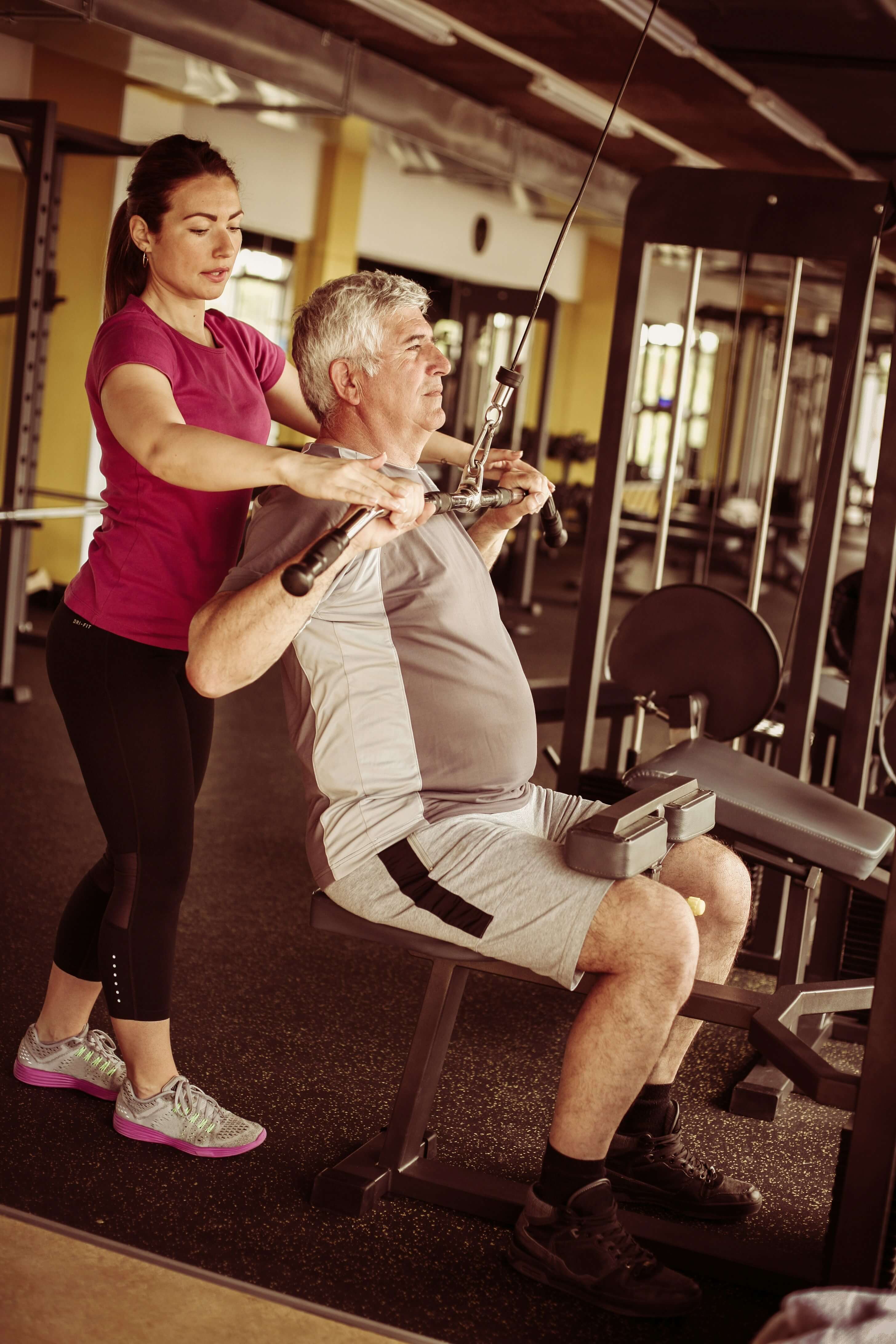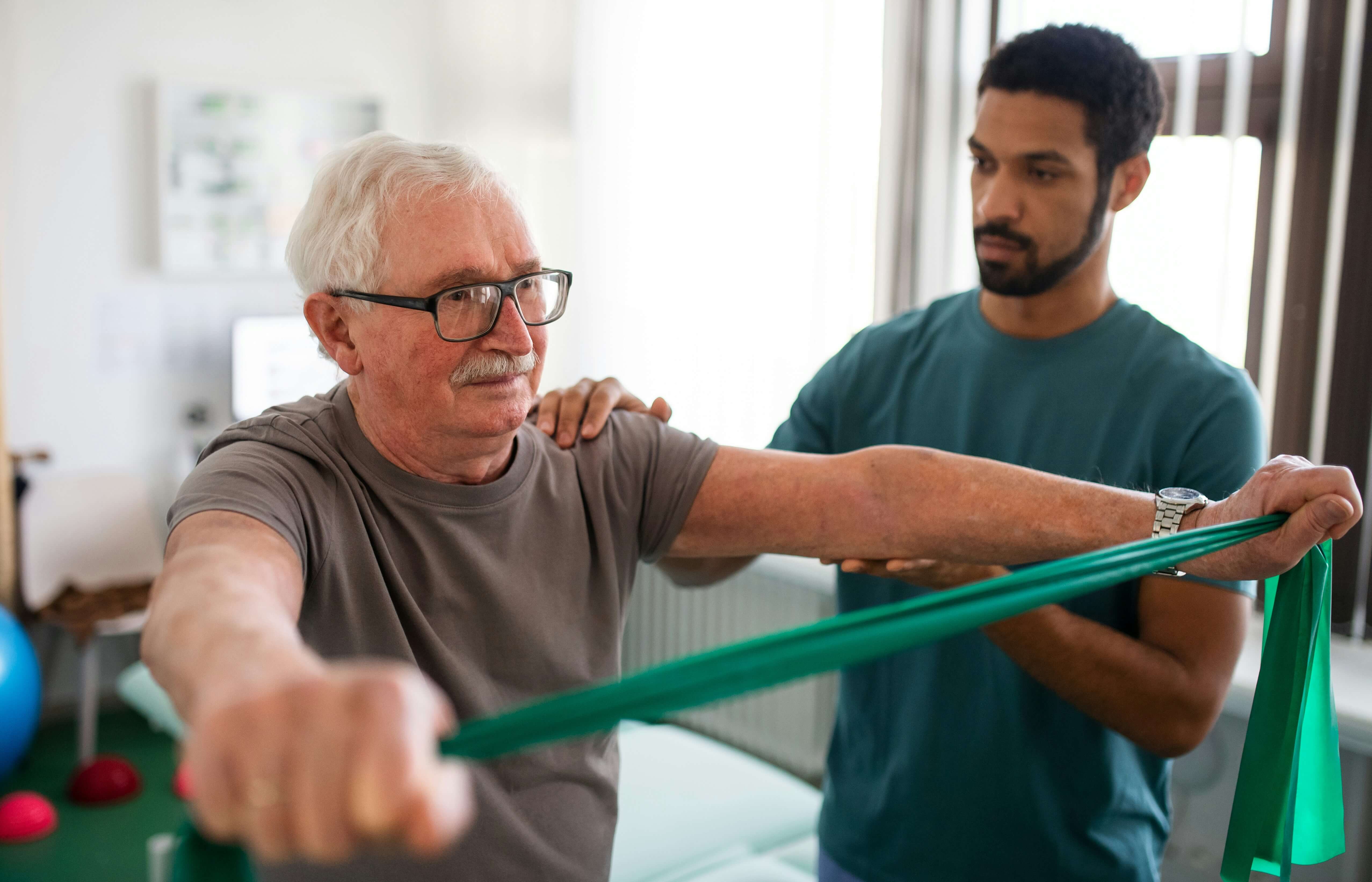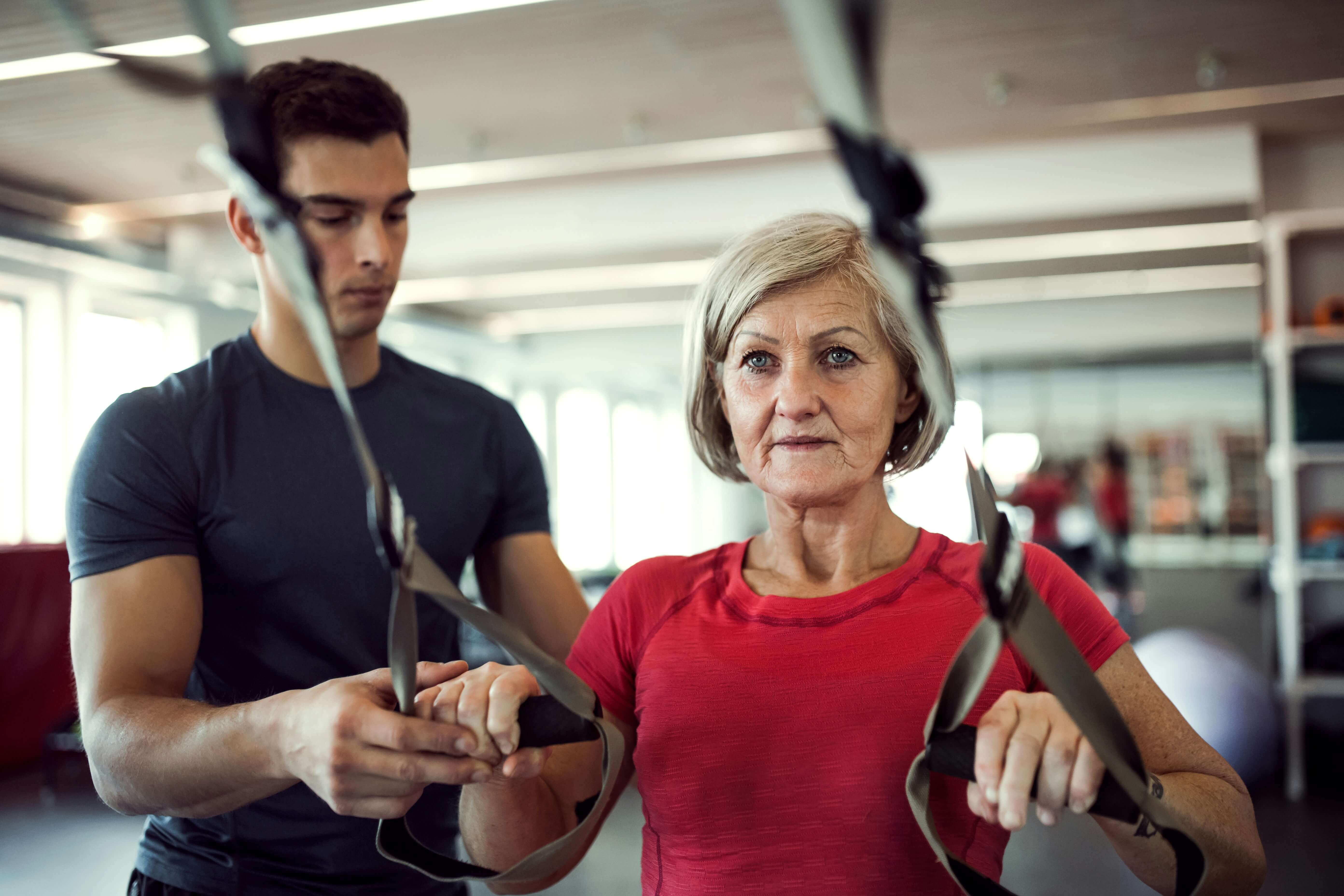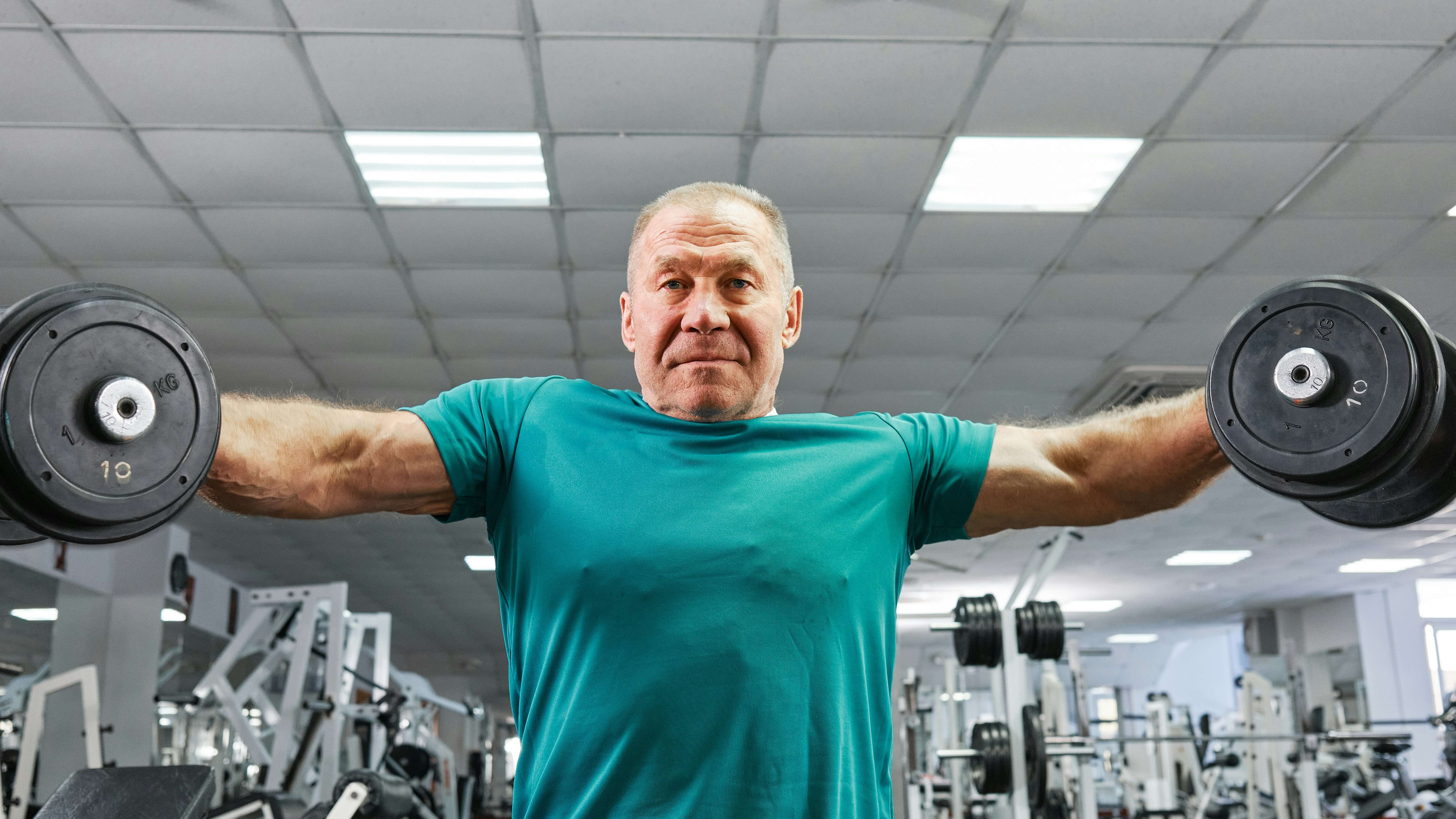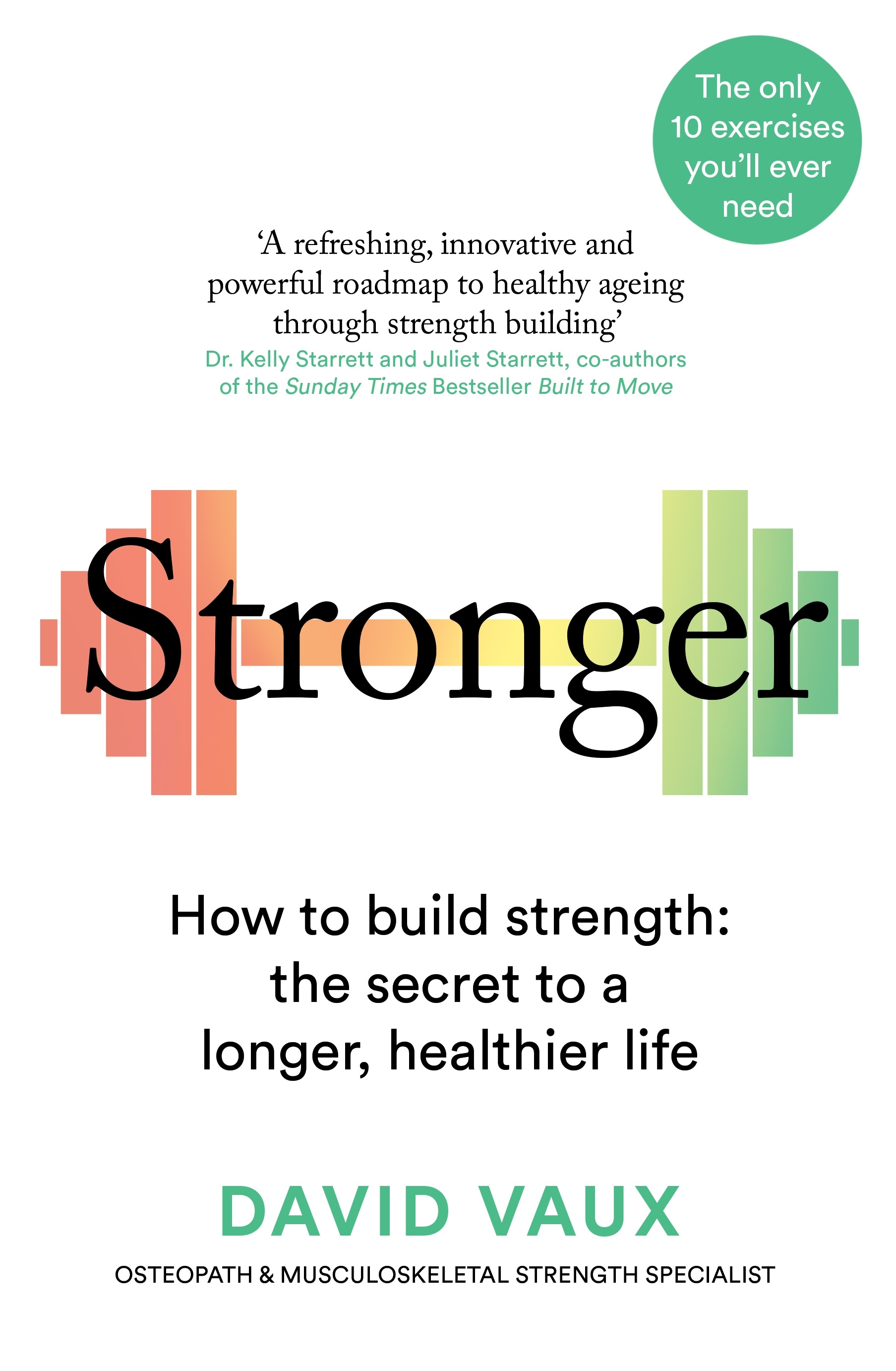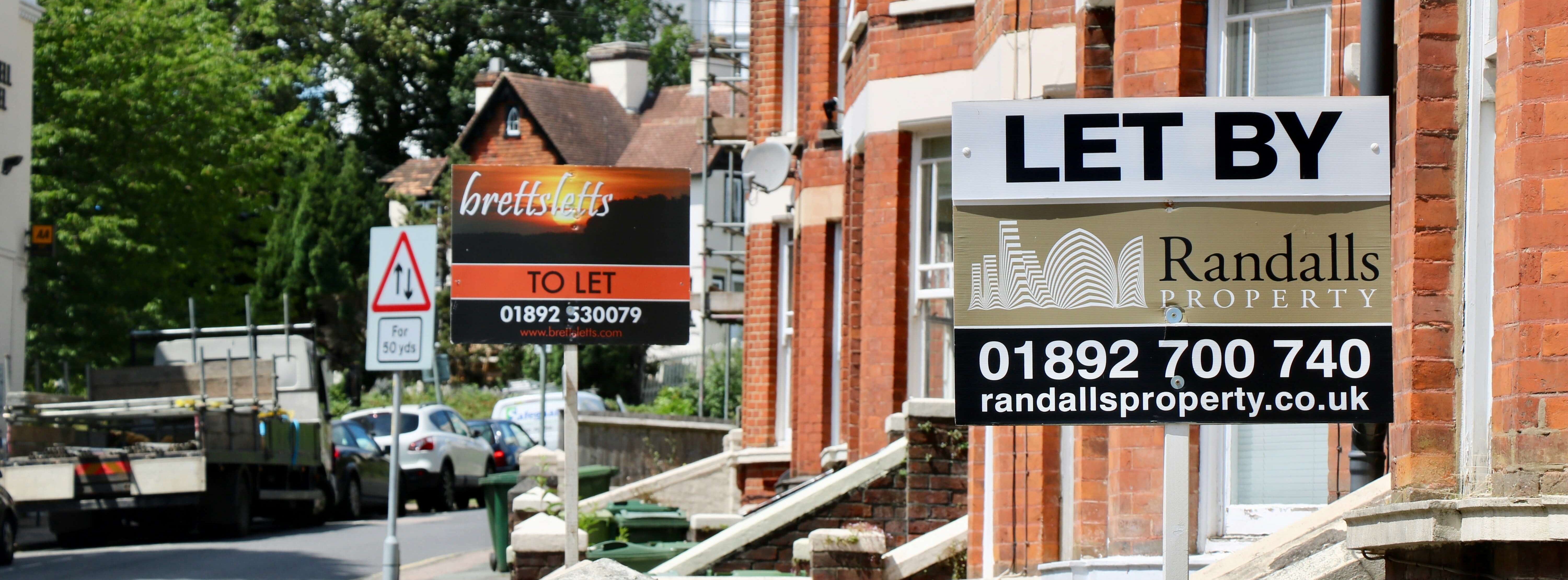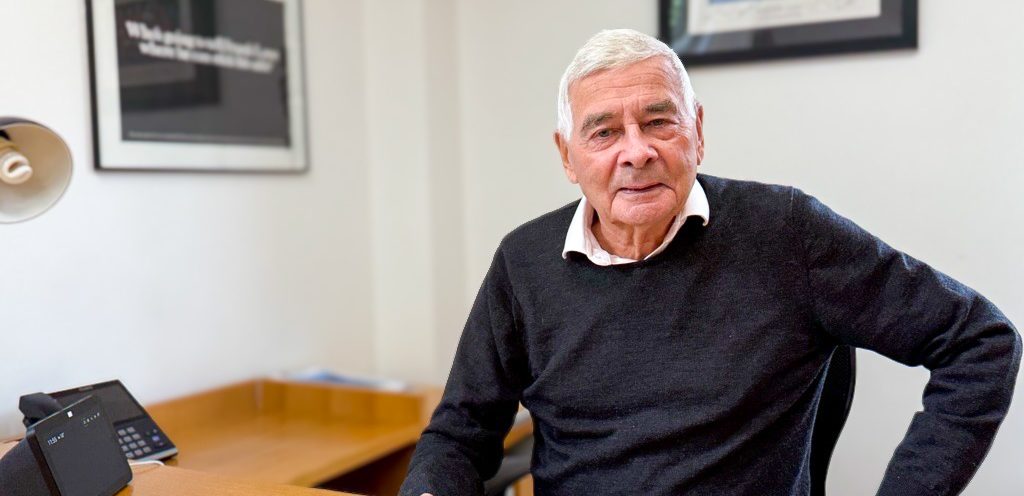Photograph by Centre for Ageing Better
Open any newspaper, magazine or social media page and you will most likely have seen adverts offering supplements purporting to help you to ‘live your best life’. Sometimes accompanied by images of an ecstatically happy older couple rollerblading off into the sunset. And why not!
Recently, I have noticed an increase in such advertising for products that claim to help you live longer- often very much longer, albeit with a cost attached. There is no doubt that we are witnessing the rise of the longevity sector which is playing into the global trend towards top-heavy ageing societies.
Even if it was possible to bio-hack our way to extra years to life, my focus has never been length of life. I prefer instead to put my energy into understanding the journeys of those individuals who could choose to don those rollerblades in their 90s, with the caveat that I am only interested if they have managed this naturally. Because in understanding what has worked for them, we can democratise that information for the greater good.
My professional focus is in adding quality of life to years, rather than simply years to life. This is driven by what I and many others have observed when working with inspirational older people, which is that strength is usually central to their story. Conversely and rather worryingly, strength is the oft-missing slice of the ‘exercise pie’ in those who have not fared as well in older age. This was the starting point for my book STRONGER, and why a large percentage of its pages contain anecdotes and stories from real people who have managed to add quality of life to their years by remaining physically strong.
The problem is that if we leave it until we are injured, older or detrained to work on our physical condition, our ability to reacquire our strength and muscle will be limited by the time we have left to practice strength training. I use the term ‘practice’ here because strength training – like any other skill – requires us to practice regularly until the movements involved become natural. Be that as it may, although it is true that we can improve our strength in advanced older age, it is not always the case that we also reacquire our all-important muscle mass – more on why this matters later.
"In other words, the longer our bodies are exposed to strength training, the greater the health dividend in the end."
Although it is arguably our busiest time, midlife is increasingly recognised as the life-stage in which we should double down on strengthening our bodies. When researching middle-age for my book, Racheal Cooper, professor of epidemiology at the Age Research Group, University of Newcastle, explained to me the cumulative beneficial effect from long term strength training. In other words, the longer our bodies are exposed to strength training, the greater the health dividend in the end. If this sounds like there are parallels to financial investments, you are not mistaken, because without investment in strengthening activity, no amount of money can help us enjoy our older age if we have become deconditioned.
For those of us working on projects to prevent such deconditioning via the UK Government Healthy Ageing challenge, a commonly encountered barrier to participating in lifelong exercise is the myth that frailty in old age is inevitable. One of the most prominent voices providing a counternarrative to this is Professor Sir Muir Gray, himself in his mid-seventies and showing no sign of slowing down.
Professor Gray argues that major health problems from biological ageing do not need to appear until the age of 90 or older, and many signs that are commonly attributed to ageing such as weakness, stiffness, shortness of breath and fatigue are in fact due to loss of fitness. I wholeheartedly agree.
The good news is that a simple, non-flashy and functional approach to long-term strength will significantly improve our health in older age whilst underpinning other activity choices – and similar to any pension, the sooner we start investing the better.
The Strength Pension
The scientific backstory to living an independent life full of movement is compelling and is one I explore at length in my book. But the long and short of it is this: Our sunset years will be defined by both the strength and muscle mass we have managed to preserve in mid-life.
Our skeletal muscles represent a reservoir of amino acids, stored within our muscle proteins. At an everyday level it is our amino acids that allow our body to conduct its housekeeping duties, including the growth and repair of muscle and other body tissues including tendons or ligaments, and the making of antibodies, hormones and enzymes that are so essential for human life. Put another way, our ability to repair and replenish our bodies, whilst also underwriting immune function and glucose absorption are all tied to the retention of our skeletal muscle. Thus, there is a duel need to preserve both our strength and our muscle mass.
This is in part why many research papers highlight the relationship between increased older age health and the retention of strength/ muscle mass in older age. Not surprisingly then, a recent article in the Guardian newspaper cited research that explored the benefits of weight training for a 12 month period in individuals near to retirement age, with the research team suggesting a significant protective effect in relation to the retention of strength for years following the intervention. This particular research considered people nearing retirement for one just year. But imagine the cumulative benefits one could amass, if we started a little earlier – perhaps in middle age?
"In midlife therefore, we need to adapt our fitness regime to include both Steps AND Reps."
However, the challenge is the common midlife preference to ‘get a sweat on’ and ‘count steps’ with endurance type exercise such as cycling, running or walking, rather than strength training – and although great for our hearts, weight, joint health and mental wellbeing, endurance exercise will not preserve our most precious ageing asset of all: our fast twitch muscle fibers – the larger, faster and more powerful versions of their slow twitch cousins. If we were going to build a frailty resistance suit, fast twitch is the material we would use – and to do so we need strength training. In midlife therefore, we need to adapt our fitness regime to include both Steps AND Reps.
In the Middle
As we approach middle-age, the vast majority of us have no wish to put ourselves in unnecessarily challenging situations such as lifting weights or doing press-ups. This is immediately understandable if, as a middle-aged person, strength training summons up images of glossy, toned young people or gyms containing intimidating equipment and noise which can feel like an alien world. Worse still, fitness influencers online often promote fitness programmes that are focused on aesthetics rather than long-term health, which can often lead to overtraining, injury, fatigue and disillusionment.
Ask yourself – how often are you in regular moderate or moderately hard physical discomfort when exercising? The truth is that most of us stop seeking discomfort through exercise by the time we are middle-aged with recent research from the Lancet finding that globally around a third of adults are classed as inactive. And, as we know, those who are active often choose to ignore the need to include any strength element in their lives.
"We don’t need to train like an Olympian to win a gold in later life health! However, we do need to make a start, and this is often the biggest challenge of all."
But before we feel defeated by this findings, other research suggests that the very people who are currently inactive actually have the most potential to make significant health gains, often via only small increases in exercise. Only a few minutes of daily strength focused activity – or strength snacking – is hugely beneficial and why I often suggest this as a great way of getting started.
In midlife we don’t need to train like an Olympian to win a gold in later life health! However, we do need to make a start, and this is often the biggest challenge of all.
Permission to Fail in order to Succeed
Perhaps a logical starting point for the new narrative of midlife strength training is in understanding our characteristics a bit better.
If pushed, I often suggest the midlife period can span between 35 to 65, but this arbitrary range is much more dependent on the lifestyle choices and health of the individual in question. I much prefer to say that in midlife we are no longer young but not yet old. The reality is that in midlife the no longer young part is gone forever. What IS still very much up for grabs is the not yet old part – this is very much within our control. And thankfully, something as simple as investing in our physical strength and preserving our muscle can keep us not yet old for a very long time. Happily, starting strength training doesn’t need to break the bank with expensive gym memberships, PT sessions or equipment. Simple bodyweight exercises, done anywhere, are known to be hugely beneficial if practiced consistently.
How then can we make strength training normal and acceptable for the majority of mid-lifers? But more importantly, how can we make it a core habit so that it becomes as routine as walking the dog or preparing a meal?
In my own case, my most valuable lesson was this: as life changes, so should our approach to maintaining physical condition. We need to be realistic in midlife and accept that we can’t train like 20-year-old us once did. Perhaps controversially, I have come to believe that in order to succeed in a long-term approach to keeping strong, we actually need to give ourselves permission to fail!
"It is truly liberating to learn that a little inconvenience - done most of the time – will go a very long way."
Central to this philosophy in midlife is recognising that following an unrealistic ‘go hard or go home’ type of mentality during fitness training will ultimately lead to feelings of disillusionment, injury or burnout.
Ultimately leaving many of us weaker over the long term. Instead, we need to work within a realistic framework that accepts the progression and regression of our physical condition in line with the ebb and flow that regular midlife pressures will offer up to us, such as fatigue, stiffness, peri-menopausal symptoms, work, family life and so on. Within this framework we can give ourselves permission to be middle aged and more importantly to have good and bad phases in our training regime. So similarly, to eating healthy most of the time, if we return to strength training – within a sensible programme – most of the time, then we are going to be just fine in the long run. In a world when exercise tends to be all or nothing- with many of us opting for the nothing, it is truly liberating to learn that a little inconvenience – done most of the time – will go a very long way.
A pathway to underwrite an older age defined by good health and independence is achievable for the vast majority of us. It doesn’t come in the form of a pill or lotion, but it does require us to find ways of challenging ourselves both intellectually and physically at regular intervals. To succeed in this, we need to move and live as we have evolved to, whilst fighting back against an ultra-convenient world in which physical challenge is optional and older age strength rendered taboo.
I for one intend to inconvenience myself for the rest of my life, by eating more broccoli (most of the time) and following my strength training programme (most of the time).
I warmly invite you to do the same. Tight clothing and rollerblades optional!

 &
& 
